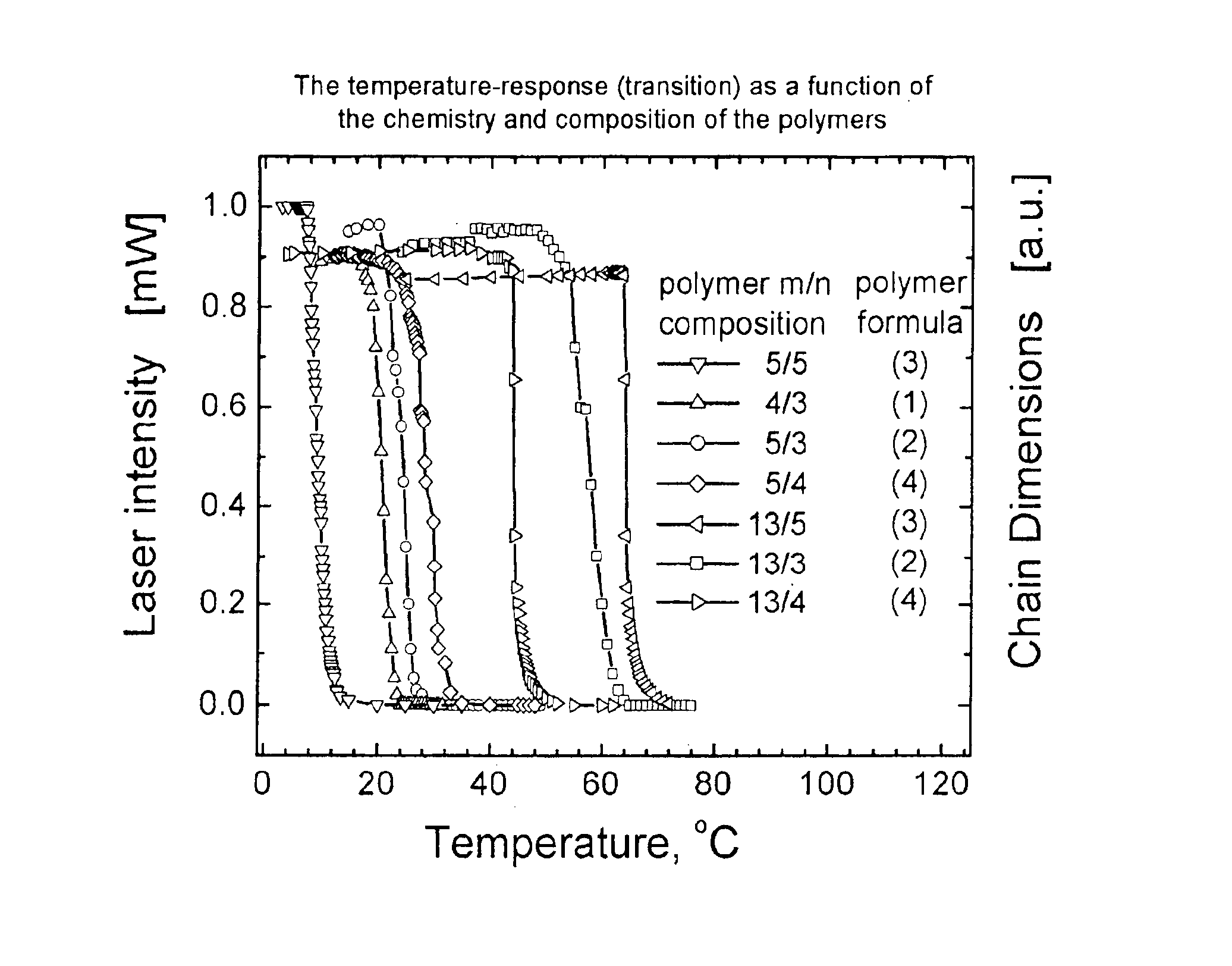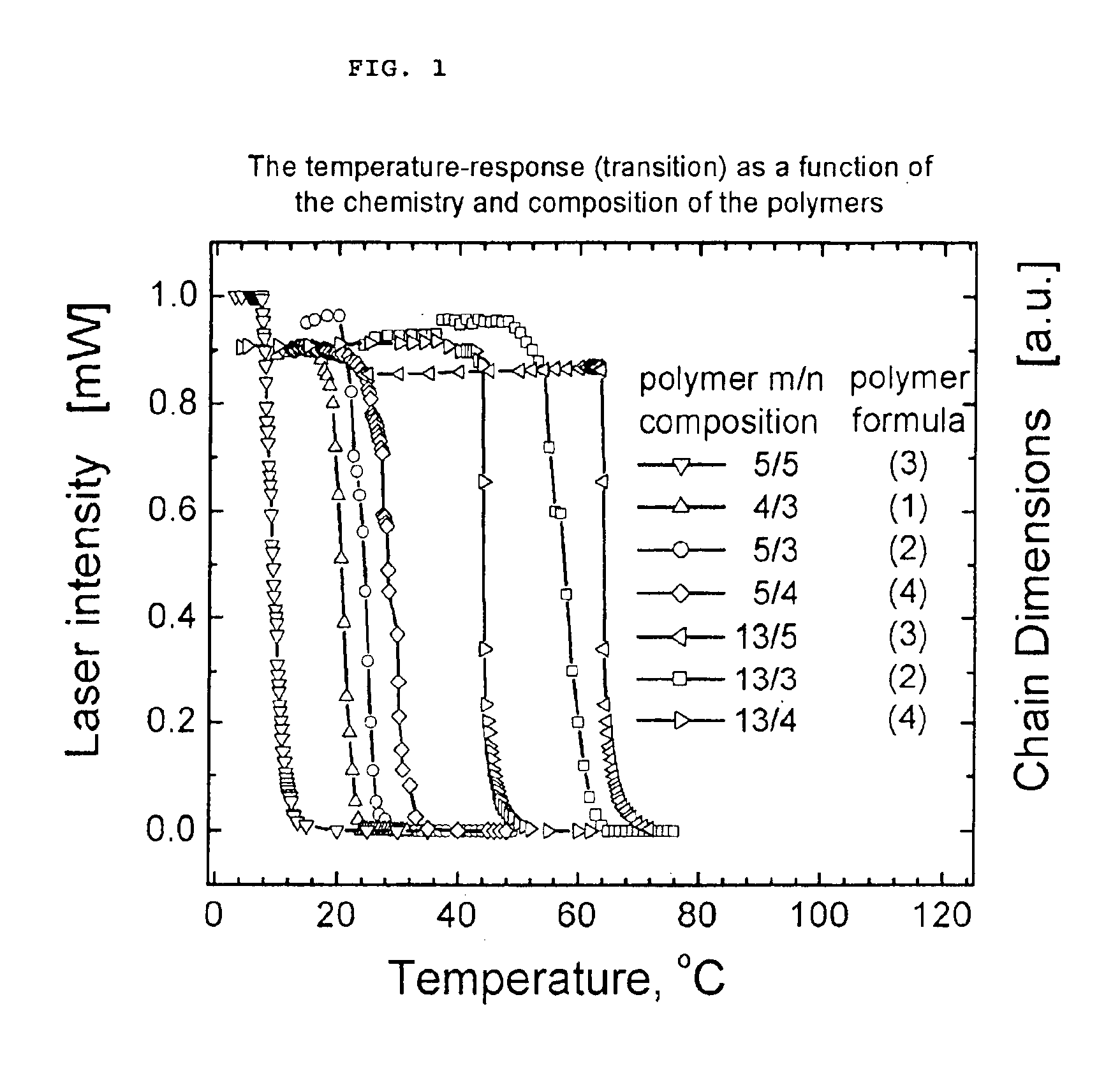Method for control of temperature-sensitivity of polymers in solution
a technology of temperature-sensitivity and polymer, applied in the direction of instruments, heat measurement, photomechanical equipment, etc., can solve the problem of limited use in biomedical applications
- Summary
- Abstract
- Description
- Claims
- Application Information
AI Technical Summary
Benefits of technology
Problems solved by technology
Method used
Image
Examples
examples 1-5
Polyesters of Formula (1)
[0045]The polyesters of formula (1) generally may be produced by a polycondensation reaction where poly(m)ethylene glycol is reacted with dicarboxychloride poly(ethylene). In these examples, m represents the number of EO groups and n represents the number of EE groups.
example 1
Synthesis of Polyester of Formula (1) where Ratio of (m / n)=4 / 3
[0046]0.01 mol of poly(ethylene glycol), MW=200 g / mol is mixed with 0.005 mol of 1,6-hexanedicarboxychloride (suberoyl chloride) in 40 mL of tetrahydrofuran (THF) solvent to form a solution. Solid NaOH, in an amount of 0.2 g, is present in the solution as a catalyst. The solution is heated to 90° C. Then, an additional 0.005 mol of 1,6-hexanedicarboxychloride is added drop-wise over a period of 2 hours to the solution. The resulting solution is maintained under reflux conditions at 90° C. for 10 hours. The THF solvent is fully evaporated and the residue is deposited into 100 mL of absolute ethanol to form a second solution. The second solution is placed into a separatory funnel where insoluble inorganic side products (e.g. NaCl) are separated from the polymer solution in absolute ethanol. The ethanol is evaporated at 50° C. to obtain the polyester of formula (1) where m / n=4 / 3. The high molecular weight fractions of the po...
example 2
Synthesis of Polyester of Formula (1) where Ratio of (m / n)=5 / 3
[0047]The procedure of example 1 is emploved except that poly(ethylene glycol) of Mw=250 g / mol is used for reaction with 1,6-hexanedicarboxychloride.
PUM
| Property | Measurement | Unit |
|---|---|---|
| Temperature | aaaaa | aaaaa |
| Temperature | aaaaa | aaaaa |
| Length | aaaaa | aaaaa |
Abstract
Description
Claims
Application Information
 Login to View More
Login to View More - R&D
- Intellectual Property
- Life Sciences
- Materials
- Tech Scout
- Unparalleled Data Quality
- Higher Quality Content
- 60% Fewer Hallucinations
Browse by: Latest US Patents, China's latest patents, Technical Efficacy Thesaurus, Application Domain, Technology Topic, Popular Technical Reports.
© 2025 PatSnap. All rights reserved.Legal|Privacy policy|Modern Slavery Act Transparency Statement|Sitemap|About US| Contact US: help@patsnap.com



